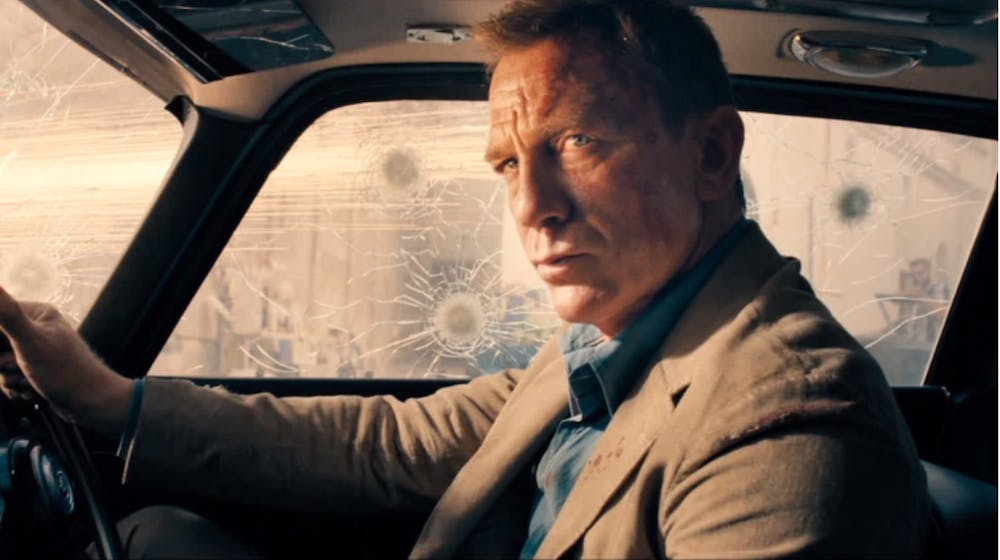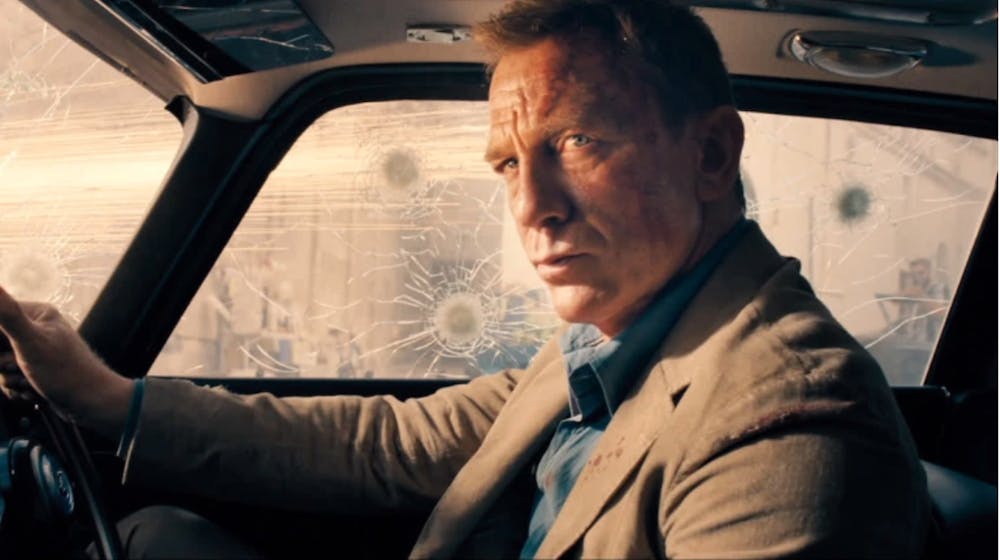
By Ian Krietzberg
Managing Editor
Spoilers Ahead
With over a nearly 60-year career on film, the character of James Bond has found himself in numerous lethal situations and always seems to wander out of them, dusting off his jacket and offering a cocky sort of grin for the viewer; his invincibility has always seemed a sure thing. The franchise is too enormous to ever feel like the titular character is in any real, legitimate danger.
But, despite its title, “No Time To Die” is a film that sought absolute conclusions for its main characters, something that has never been considered before in the length of the franchise.
Daniel Craig’s groundbreaking James Bond, lauded for its realistic, gritty portrayal, for once did not survive his mission. Craig could not have asked for a more fitting, emotional ending to his tenure as Bond. His final moments demonstrated such a release of tension as the old soldier took a moment to recognize that the nightmare of his life was finally, amazingly, about to end. And on his way out, his recognition of his daughter, the love that he showed, the peace that he exuded all, made for a stunning moment.
That moment — the death of James Bond — is truly what the entire film was about. More so than any of Craig’s previous films, “No Time To Die” worked to humanize him on a level we really have never seen. All of his human flaws and faults, his self-hatred, the harm he brings to those he loves, combined with the best parts of him; his astounding selflessness, his willingness to sacrifice again and again because it is right, and for little other reason. The cocky, self-assured, womanizing alcoholic was brought to a very different level in this film, which served the character beautifully.
And physically, the film was beautiful. Shots and lighting were carefully chosen; at times, to foreshadow events, at other times, to present this film of beauty on the tails of misery.
“No Time To Die” opens where “Spectre” leaves off. Bond’s inability to trust leads him to abandon Madeleine and go off the grid for five years. That’s when the film truly picks up; Bond’s old CIA friend Felix Leiter shows up, asking him for a favor that brings Bond back in contact with Spectre. Chaos ensues amid a truly entertaining action sequence, and Bond barely survives a sinking ship, leaving Leiter dead at the bottom of the sea.
This brings Bond back to MI6, where he is reinstated as a “double-0” agent, and sent to hunt down leads and find a missing scientist who had stolen a biological weapon that M had initiated 10 years prior.
Yes, much of the film is relatively predictable. The villain has an interesting backstory, but very little screen time, and doesn’t seem to have a super clear reason for his goal of what seemed to be global extermination via this biological weapon. While that concept does hit a little differently in a post-Covid world, it felt tired and a bit overused. However, Rami Malek’s portrayal gave enough of a sense of overwhelming danger and uniqueness that I really didn’t mind that the plot — filled as it was with firefights and fistfights, car chases and scotch — was largely recycled.
The wonderful thing about this movie is that the plot itself, the villain and the villain’s ‘evil plan’ truly did not matter. This was one of those rare films where the movie is not about the plot. The movie is about the character. The movie is about this tired old soldier drawn back into yet another fight with the highest stakes imaginable, once again; I’d even say that the plot was recycled on purpose. It is a tiring fight for Bond. That has been a theme of Daniel Craig’s portrayal from the beginning. Craig’s Bond has always been deeply broken, severely damaged, a self-medicated, alcoholic monster whose self-hatred could only be tamed by serving his country in constant near-suicidal missions.
And between and around this journey of Bond’s tired soldier is this beautiful story about family. Bond discovers his daughter and is finally able to express his love for Madeleine. He finally wants a peaceful life. He craves a family.
The scenes where he is straining to protect his family, fighting and killing and sprinting beyond what he is humanly capable of out of fear of what the villains might do to his daughter are beautiful and real.
And, as always, every actor in the film is a true star, from the child actors to Bond and his “team” — a longrunning truth of Craig’s Bond run has been general realism, and “No Time To Die” does not disappoint on that front.
There are three specific shots in the film that I would be remiss if I did not mention.
The first: as Madeleine and Bond’s daughter pull away from the soon-to-be bombed island in a boat, sliding under a kind of garage door, the sunlight spills around them, wreathing them in this raw, pure golden light. It is a visually beautiful moment, even more so for what it represents: there, we see them through Bond’s eyes. And beyond that, it is a moment that foretells Bond's demise. They are wreathed in light while he stands in shadow; a veil separates them, denies their future.
The second: Bond’s final moments speaking to Madeleine, staring out at a beautiful ocean, smiling softly, looking happy and at peace with himself for the very first time. Feeling a sense of freedom in his impending death that he never had in life.
And the last: M (Ralph Fiennes) pouring a glass of scotch, left empty on the table in memory of Bond, and clinking the glass softly in recognition of a hero and friend. That last scene was another one filled with human emotion; the people in that room were largely Bond’s only friends. The hole his death left in their lives is clear; they thought, as did the audience for nearly six decades, that James Bond was invincible. To have that truth turn out to be fiction was a stunningly raw moment.
I cannot imagine how they will ever make another Bond movie. I cannot imagine another actor coming in to follow this breathtaking and final performance.
And though money demands that this franchise will likely never die, Daniel Craig’s 15-year stint as Bond, with this film, in particular, marks a standout moment of absolute legend.
No other Bond was as deeply or truly explored as Craig’s Bond. Never before did that character actually see true development. And never before did an actor’s tenure as Bond end with his death, for if that would ever happen, the mythology of James Bond would collapse.
Here, I think the mythology of James Bond has been cemented.
This film marks the only fitting conclusion to Craig’s Bond. And though it would never happen, it also marks the best conclusion to the franchise itself.
Let it end on a note of painful beauty, and then, for once, maybe walk away.







